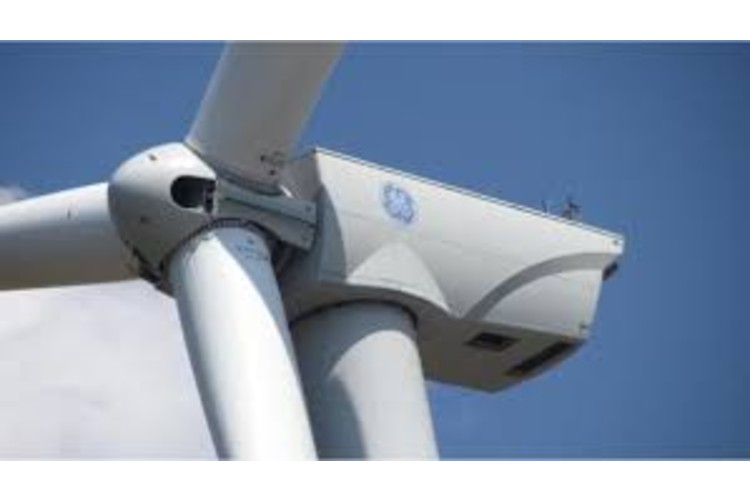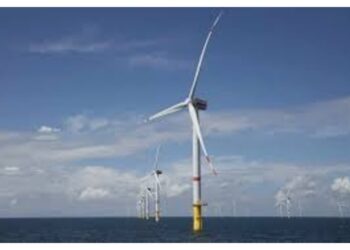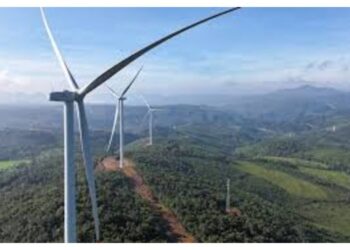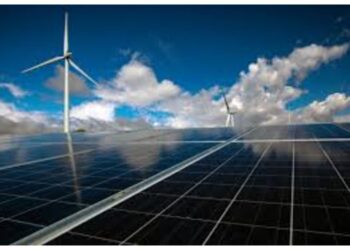Insights from a new study could help unlock the full potential of a developing form of smaller-scale wind power generation, researchers say.
Engineers from the University of Glasgow have used sophisticated computer simulations of bladeless wind turbines (BWTs) to identify for the first time how future generations of the technology could be built for maximum efficiency.
The findings could help the renewables industry take BWTs, which are still at an early stage of research and development, from small-scale field experiments to practical forms of power generation for national electricity grids.
Unlike conventional wind turbines, which convert the kinetic energy of blades propelled by moving air into electricity, BWTs generate power through a process called vortex-induced vibration.
BWTs take the form of slim cylindrical structures which sway in the wind, like lampposts in inclement weather. As the wind blows against them, BWTs create vortices – alternating swirls of air that rock the entire structure back and forth. When the frequency of the rocking matches the structure’s natural tendency to vibrate, the motion is amplified significantly, and the increased motion is converted into electricity.
In a new paper published in the journal Renewable Energy, the team show how they used computer modelling techniques to simulate the performance of thousands of variations of BWT design. The results cast valuable new light on the interplay between mast dimensions, power output, and structural safety in winds between 20 and 70 miles per hour.
Their key finding is that there is an optimal design for BWTs which creates a ‘sweet spot’ where power generation is maximised against structural strength. The ideal design, which finely balances power generation against sturdiness, is an 80cm mast which is 65cm in diameter. That design could safely deliver a maximum of 460 watts of power, the team found, significantly outpacing the best performance of even the best-performing real-world prototypes built to date, which have delivered a maximum of 100 watts.
Their model also demonstrated the limits of other designs, which could potentially generate more power. In the paper, they show how different designs of BWTs could, in theory, generate up to 600 watts, but at the cost of structural integrity – in real-world conditions, they would quickly fail.
The team say that their methodology could provide the foundation for scaling up BWTs to utility-grade systems generating 1 kilowatt and beyond, making them much more practical for use by renewable energy providers.
Dr Wrik Mallik, of the University of Glasgow’s James Watt School of Engineering, is one of the paper’s corresponding authors. He said: “What this study shows for the first time is that, counterintuitively, the structure with the highest efficiency for extracting energy is not in fact the structure which gives the highest power output. Instead, we have identified the ideal midpoint between the design variables to maximise the ability of BWTs to generate power while maintaining their structural strength.
“In the future, BWTs could play an invaluable role in generating wind power in urban environments, where conventional wind turbines are less useful. BWTs are quieter than wind turbines, take up less space, pose less of a threat to wildlife, and have fewer moving parts, so they should require less regular maintenance.”
The James Watt School of Engineering’s Professor Sondipon Adhikari is also a corresponding author of the paper. He said: “We hope that this research will help spur industry to develop new prototypes of BWT designs by clearly demonstrating the most efficient design. Removing some of the guesswork involved in refining prototypes could help bring BWTs closer to becoming a more useful part of the world’s toolbox for achieving net-zero through renewables.
“We plan to continue refining our understanding of BWT design and how the technology can be scaled up to provide power across a wide range of applications. We’re also keen to explore how metamaterials – specially-designed materials which have been finely-tuned to imbue them with properties not found in nature – could boost BWTs’ effectiveness in the years to come.”
James Watt School of Engineering master’s student Janis Breen also contributed to the paper. The team’s paper, titled ‘Performance analysis and geometric optimisation of bladeless wind turbines using wake oscillator model’, is published in Renewable Energy.













